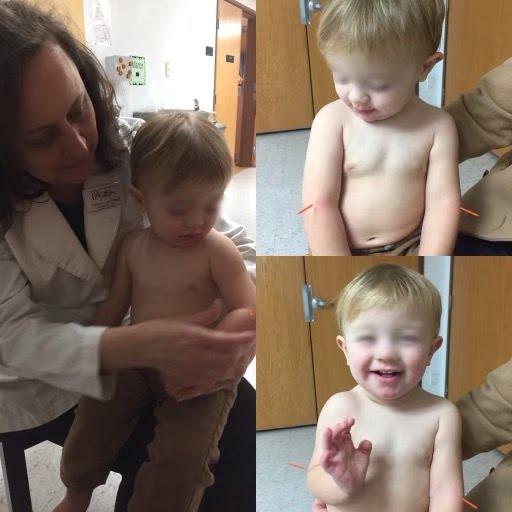Pediatric Care
The Traditional Chinese Medicine (TCM) approach to health is proactive; it seeks to prevent illness from occurring and builds immunity. That is why many parents are turning to TCM for maintaining their children’s good health. TCM can be used as a complement to Western medicine and is safe and without side effects.
TCM practitioners believe in treating both symptoms and the root cause of an illness. Early treatment reduces the length of the illness and prevents more serious complications from developing.
A relatively simple approach should be used in treating children, as they are more sensitive
and respond to treatment quickly. Often times pediatric massage (Tui Na) and nutritional therapy works very well. When acupuncture is used in children, fewer needles are used and retained for a much shorter time, often only moments compared to 40 minutes in adults.
The organs most often treated in children are the Lungs, Spleen and Liver. The Qi of these
organs are immature and manifest as respiratory issues, digestive complaints and colic or temper tantrums.
With treating children, special attention should be given to protecting the Spleen and
Stomach, because after birth growth and development depend on the condition of the
Spleen and Stomach. Children who are congenitally insufficient need nourishment and replenishment. Proper absorption of food and medicinal is only possible if the Spleen and Stomach are functioning properly.
It is important to treat young children with TCM in a timely manner to restore balance and harmony within the body. Illness can develop and change quickly in children. Delaying treatment could allow the pathogens to go deeper and illness to become more complicated.
Diagnostic methods are the same for pediatric diseases and are based on the same
examinations of observation & inspection, auscultation (listening), olfaction (smelling), inquiry and palpitation. Information is gathered through the parents and caregivers and with simple questions to the child when appropriate. To ensure accurate diagnosis, greater attention is paid to observation and inspection of tongue, facial color and complexion of lips, eyelids, forehead and the venules of the index fingers in children under three.

Pediatric Conditions Commonly Treated
ALLERGIES
APPETITE
ATTENTION DEFICIT
BED-WETTING
BREATHING DIFFICULTY
CANKER SORES
COLIC
COMMON COLD
CONJUNCTIVITIS
CONSTIPATION
COUGH
CRADLE CAP
DIARRHEA
DIAPER RASH
DIGESTIVE DISORDERS
EAR INFECTIONS
ECZEMA
FEVER
FUNGAL INFECTIONS
HEAT RASH
HIVES
HYPERACTIVITY
LAZY EYE
NAUSEA
NOSEBLEEDS
NURSING ISSUES
PAIN
PARASITES
POISON IVY
RESPIRATORY DISORDERS
SKIN INFECTIONS
SLEEP
SORE THROAT
STRESS
SWOLLEN GLANDS
TEETHING
TONSILLITIS
TRAUMATIC INJURIES
VOMITING
WARTS
WHEEZING
YEAST IMBALANCES
